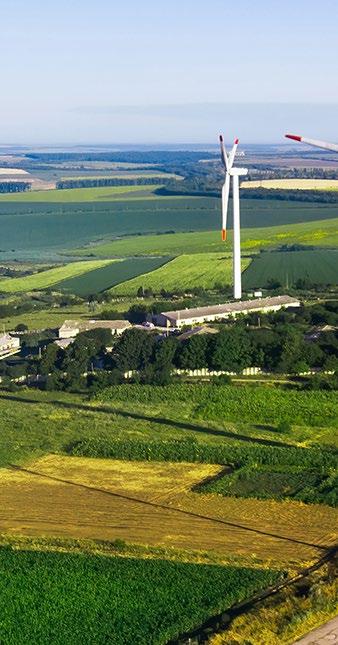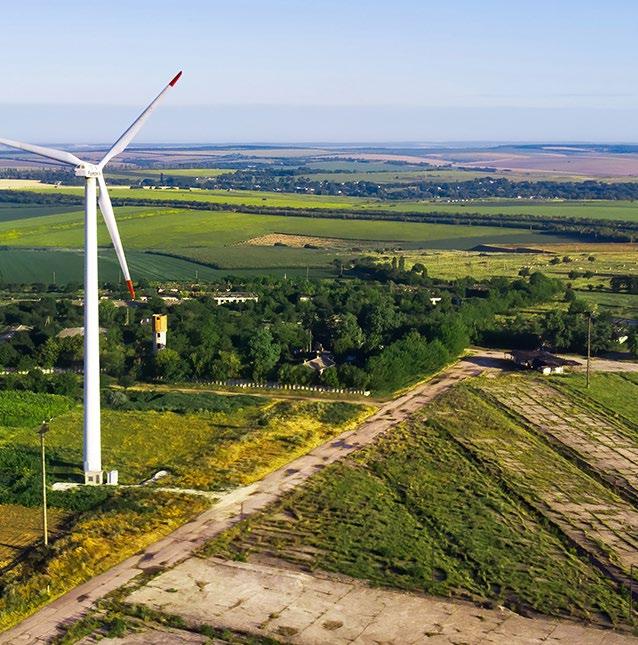
4 minute read
3.3 Driving sustainability forward in the CEE region

Sustainability is a global challenge that requires local solutions, making regional collaboration among stakeholders familiar with business practices in the area even more crucial.
Trade finance plays a vital role in global economic activities, facilitating the movement of goods and services across borders.
However, as the world grapples with the pressing challenges of climate change and environmental degradation, the need to incorporate sustainability into trade finance practices is increasingly important.
To learn more about the complexities and efforts involved in greening trade finance, focusing on the Central and Eastern European (CEE) region, Trade Finance Global spoke with Martina Zimmerl, head of trade finance at Raiffeisen Bank International (RBI).
The need for global sustainability standards

The journey towards sustainability in trade finance is a challenging one.
One of the biggest issues in greening trade finance lies in assessing the sustainability of the multiple parties involved in a transaction. This includes evaluating the practices of suppliers and buyers, the nature of the goods, and even the transportation route used to bring the goods to their destination.
This is a complex undertaking compounded by the fact that there are currently no global standards in place to ensure alignment with sustainability objectives.
Without global standards, the environmental impact of the many trade finance activities involving partnerships with developing countries, which may have different standards or priorities, become next to impossible to measure or manage.
For instance, many countries may not have laws in place to protect the environment, leaving the onus of responsibility on the financial institution to ensure their practices align with sustainability objectives.
Thankfully, the European Union (EU) taxonomy may be able to help.
The EU taxonomy
The EU taxonomy is a framework for supporting the green transformation of the EU that aims to identify which economic activities are environmentally sustainable and align with the EU’s green objectives.

However, compliance with the taxonomy is challenging and requires detailed data on various aspects of the transaction in question, such as labour conditions and sourcing practices. Sometimes, however, this data isn’t available.
Zimmerl said, “There is always the problem of data. Trade finance is cross-border and very often involves developing countries that may have different data practices. How can I assess the sustainability of a trade finance transaction when I have limited access to data?”
It’s like trying to complete a puzzle without the right pieces: you might be able to make an educated guess based on what you have available, but the complete picture will always be out of reach.
In the meantime, while the industry contends with these data challenges, financial institutions can still enact a positive change by leveraging the power of incentives.
The power of incentives
Incentivisation plays a crucial role in driving sustainable trade finance, and many global financial institutions have implemented internal and external incentive practices to encourage clients to adopt sustainable practices.
By adjusting the pricing of transactions, banks can make non-sustainable transactions relatively more expensive and encourage internal sales representatives to recommend sustainable alternatives.
On the external front, they can coax clients towards greener alternatives through KPI-linked facilities that provide an incentive if the client meets a predetermined sustainability target. These KPI-linked facilities have proven to be an effective way to drive sustainable practices in trade finance.
Zimmerl said, “When we offer these KPI-linked guarantee facilities or import letter of credit facilities to companies, we really can drive the behaviour of the client towards more sustainable production.”
For example, RBI collaborates with clients like Primetals, a mining equipment manufacturer, to define KPIs related to reducing CO2 emissions.
If the client meets the agreedupon KPIs, they receive a small incentive on the margin. However, if the KPIs are not fulfilled, RBI raises the fee and donates the difference to a charity, ensuring accountability and encouraging Primetals to prioritise sustainability.
A look at Central and Eastern Europe
Sustainability is a global challenge that requires local solutions, making regional collaboration among stakeholders familiar with business practices in the area even more crucial.
In the CEE region, there are unique challenges and opportunities for driving sustainability in trade finance. The region is characterised by a diverse mix of economies, ranging from highly developed countries to emerging markets, posing challenges in terms of prioritising and eventually harmonising sustainability standards and practices across borders.

The CEE region can leverage shared experiences and knowledge to develop localised sustainability frameworks and initiatives. This includes engaging with governments, regulatory bodies, financial institutions, corporates, and civil society organisations to foster dialogue and cooperation.
Collaborative efforts can lead to new funding mechanisms, incentives, and regulatory frameworks supporting sustainable trade practices and can foster knowledge sharing, enabling the pooling of resources to address common challenges in the region.
Another important aspect of driving sustainability in trade finance in the CEE region is capacity building. This involves enhancing the knowledge and skills of trade finance professionals, as well as promoting awareness and understanding of sustainable practices through training programs, workshops, and industry conferences.
Beyond capacity building, digitalisation can greatly facilitate the integration of sustainability into trade finance processes. Digital platforms and tools can enhance data and analytics, providing a sandbox to assess the environmental impact of trade transactions, track sustainability performance, and facilitate transparent communication between parties.
Greening trade finance is a complex yet crucial task in the face of global sustainability challenges.
The CEE region can contribute to sustainable trade practices by embracing initiatives, building capacity, leveraging technology, fostering collaboration, and aligning with global sustainability frameworks.
By driving sustainability forward in trade finance, the region can contribute to a more sustainable and resilient global economy while reaping the benefits of long-term environmental and social well-being.
Sustainable trade finance relies on partnerships
Trade finance can be an intimidating industry to break into, especially when entering without an established partner. It becomes even more difficult to operate in the sustainable trade finance space. As the gateway bank to CEE with 12 network banks, as well as with a strong presence in Asia and on all main financial hubs, RBI offers the coverage needed for global business.











